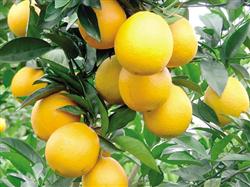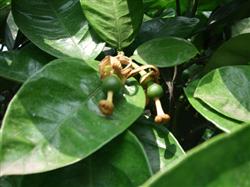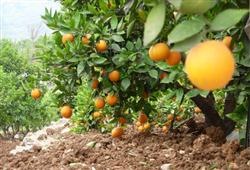How to fertilize Fuchuan navel orange?

How to fertilize Fuchuan navel orange? Please give guidance to Fuchuan navel orange fertilization there are two kinds of soil fertilization and extra-root topdressing, mainly soil fertilizer, fertilization methods are as follows: (1) soil fertilization: soil fertilization should not only facilitate the root system to absorb fertilizer as soon as possible, but also prevent the root system from suffering fertilizer damage. Therefore, fertilization should be made according to time, tree and fertilizer. Adhere to shallow root application, deep root application, shallow application in spring and summer, deep application in autumn and winter, shallow application of inorganic nitrogen, deep application of phosphorus and potassium fertilizer and organic fertilizer. Fertilization in autumn and winter should be combined with deep turning and expanding holes to improve soil and bury green manure; phosphate fertilizer is easy to be fixed by soil and has a good effect of deep application mixed with mature organic fertilizer or bio-organic compound fertilizer. There are various methods of soil fertilization, including annular ditch application for navel orange young trees, strip ditch application for adult navel orange fruit trees, and radial ditch application for navel orange trees with narrow terrace. In view of the fact that navel orange is a deep-rooted crop, the root system is mainly distributed at the depth of 40cm to 80cm, and the position of fertilization should be outside the crown dripping line, not near the main root under the trunk. ① ring ditch fertilization: according to the size of the crown, take the trunk as the center, open a ring ditch near the outer edge of the crown, the depth of the ditch depends on the depth of the root distribution, generally 20 cm to 30 cm deep and 30 cm wide. The advantage of circular fertilization is that it is fertilizer-saving, simple and easy to do, but it has a small area and is easy to hurt roots, so it is often used to fertilize young trees. ② radial fertilization: according to the size of the tree crown, dig 4-6 radial trenches in the tree plate, the groove width is about 30 cm, near the trunk should be shallow, outward deeper. In this method, the root injury is less, and the fertilization site is changed every other year or every other time to expand the fertilization area. ③ strip furrow fertilization: strip trenches were opened between rows or plants of navel orange trees, 30 cm deep and 30 cm wide, and filled with soil after fertilization; alternating ditches between plants and rows year by year, it is suitable for fertilization in adult navel orange orchards, especially in closed navel orange orchards. ④ hole fertilization: evenly dig 8 holes in the outer edge of the crown, 20 cm deep and 30 cm wide, apply fertilizer into the hole, and then cover the soil after infiltration. The method of hole fertilization is simple, the root injury is less, but the fertilization area is small, so it is suitable for the application of liquid fertilizer. ⑤ whole garden fertilization: spread fertilizer evenly throughout the garden, and then turn it into the soil. It is suitable for navel orange adult orchards with roots all over the orchard, but the fertilization depth is shallow and it is easy to lead to root growth, so it should be used alternately with other methods. (2) extra-root topdressing: extra-root topdressing is also called foliar fertilization. The main nitrogen fertilizers used for foliar spraying were urea, ammonium sulfate and ammonium nitrate, and urea was the best, while phosphate fertilizer was mainly ammonium phosphate (mixture of ammonium dihydrogen phosphate and ammonium hydrogen phosphate), calcium superphosphate, potassium dihydrogen phosphate, dipotassium hydrogen phosphate and so on, among which ammonium phosphate was the best. Calcium superphosphate as foliar fertilizer, soaked in water for one day and night before use, prepared according to the required concentration; potassium fertilizer, mainly potassium dihydrogen phosphate, potassium sulfate, potassium chloride, potassium nitrate and dipotassium hydrogen phosphate, potassium dihydrogen phosphate is the best. In order to save man-hours, different fertilizers are usually mixed to meet the comprehensive requirements of nutrient elements for the growth and development of navel orange, and sometimes proper mixing of fertilizers can improve fertilizer efficiency. Click to get more navel orange planting techniques click to get more fruit planting techniques
- Prev

How to manage the fruiting period of Fuchuan navel orange
How to manage the fruiting period of Fuchuan navel orange? Fuchuan navel orange fruiting period management may refer to the following methods: 1, due to tree dressing stable fruit fertilizer and strengthen foliar fertilizer early fruiting tree bud after flowering consume a lot of nutrients, in order to improve the fruit, should be in the second physiological fruit before (early June) timely chase...
- Next

How to manage the cultivation of navel oranges?
How to manage the cultivation of navel oranges? Please give a comprehensive introduction to the cultivation of navel oranges can be managed with reference to the following methods: (1) the mineral nutrients and water needed for soil management of navel orange trees are mainly absorbed from the soil through roots. Soil is not only the basis of the growth and development of navel orange, but also the storage of fertilizer and water.
Related
- Moge, come on! The staff of the peasant association in the producing area of cantaloupe were frightened when the crowd gathered.
- Causes and Solutions of low Fruit setting rate of Apple
- Symptoms and control measures of passion fruit virus disease
- Fruit growing lesson: how do apple orchards keep high yields?
- Can you build orchards in the mountains? What are the pros and cons?
- How to manage the coloring period of Crisson grape?
- This paper introduces the processing technology of two kinds of fig products.
- How much is a month for retired teachers in rural areas by 2020?
- How can strawberry planting increase sugar content? We should pay attention to management in many aspects.
- What are the cultivation techniques on how to improve the yield of golden fruit?

